
Interview with ceramic artist Keisuke Nagayoshi (Keisuke Kiln) (Hiki, Kagoshima Prefecture)
Share
It's late October and there's no sign of autumn at all, except for the persimmons along the road.
I went to Hioki, Kagoshima to visit Keisuke Kiln to meet Keisuke Nagayoshi.
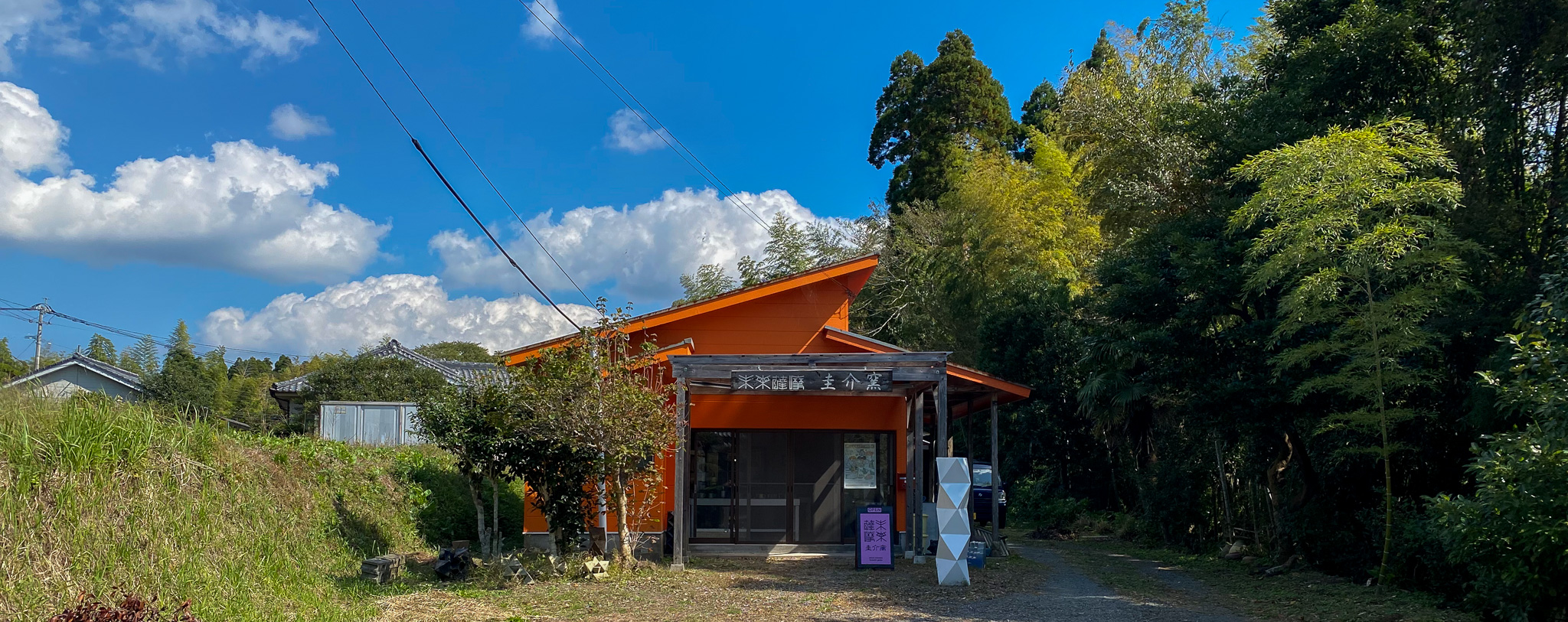
The journey to becoming a potter
I studied photography at a vocational school in Setagaya, and after graduating, I worked at an advertising agency. I commuted from my home in Machida to the company in Meguro. After the bubble burst, I quit the company and returned to my hometown of Kagoshima. My father was a potter, so I apprenticed with him for a year and learned pottery. I was around 29 years old.
At first, I learned how to make small dishes to get my hands used to it.
The most memorable part of the process was "killing the soil." This is how the legs of the piece were born.
The name "Toge" (spike) was originally given to rice bowls as a joke, and was derived from "togewan" (a bowl with thorns).
(Note: If you get pricked by a Keisuke Kiln thorn, it really does sting.)
He made ceramics such as vessels, flower vases, and sake cups with distinctive legs and spikes. It took him 25 years of hard work to finally make flower pots. 25 years has been a long time...
I've been making flower pots for five years, and I started selling them in about the second year. Nowadays, customers wait roughly one year from order to delivery.
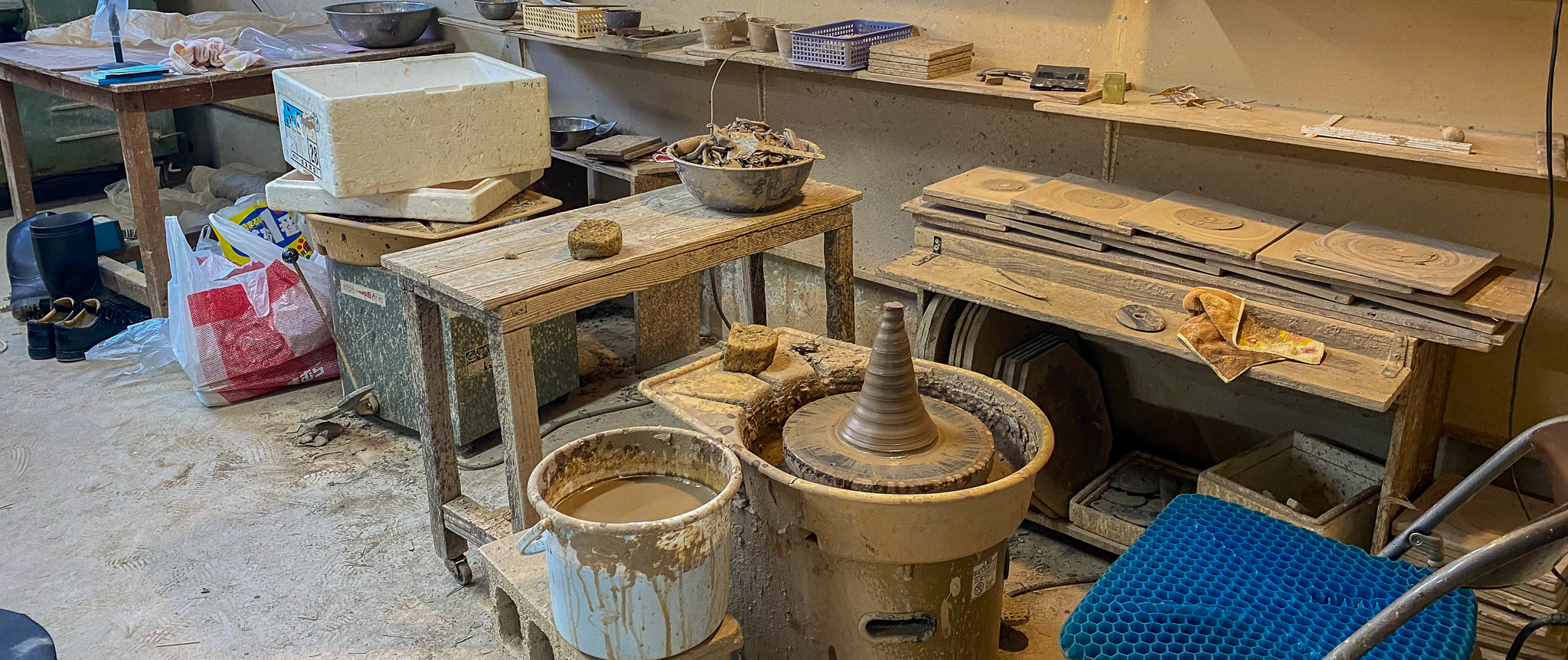
Please tell me the four seasons in Hioki City, Kagoshima Prefecture.
Kagoshima doesn't have spring or autumn. In both seasons, it gets a little chilly in the mornings and evenings, but it's pretty hot during the day. Summer and winter feel long, and the temperature changes drastically between hot and cold while you're sleeping.
I'm almost always naked at home, and when I'm alone in my studio I work naked. I'm a "nudist" (laughs). When it starts to get a little cold, I put on some clothes, but I usually take them off. Today I'm barely wearing any clothes. When it starts to get cold, I light the kiln to keep warm. It's a gas kiln.
When Sakurajima erupts, volcanic ash falls lightly on Hioki. It affects daily life in Kagoshima city. But Kagoshima is all about Sakurajima. It's cool to have an active volcano right in front of you. But I don't like Tsuyoshi Nagabuchi, I love Keisuke Kuwata. I'm a big fan. I'm always into Kuwata while I'm doing pottery.
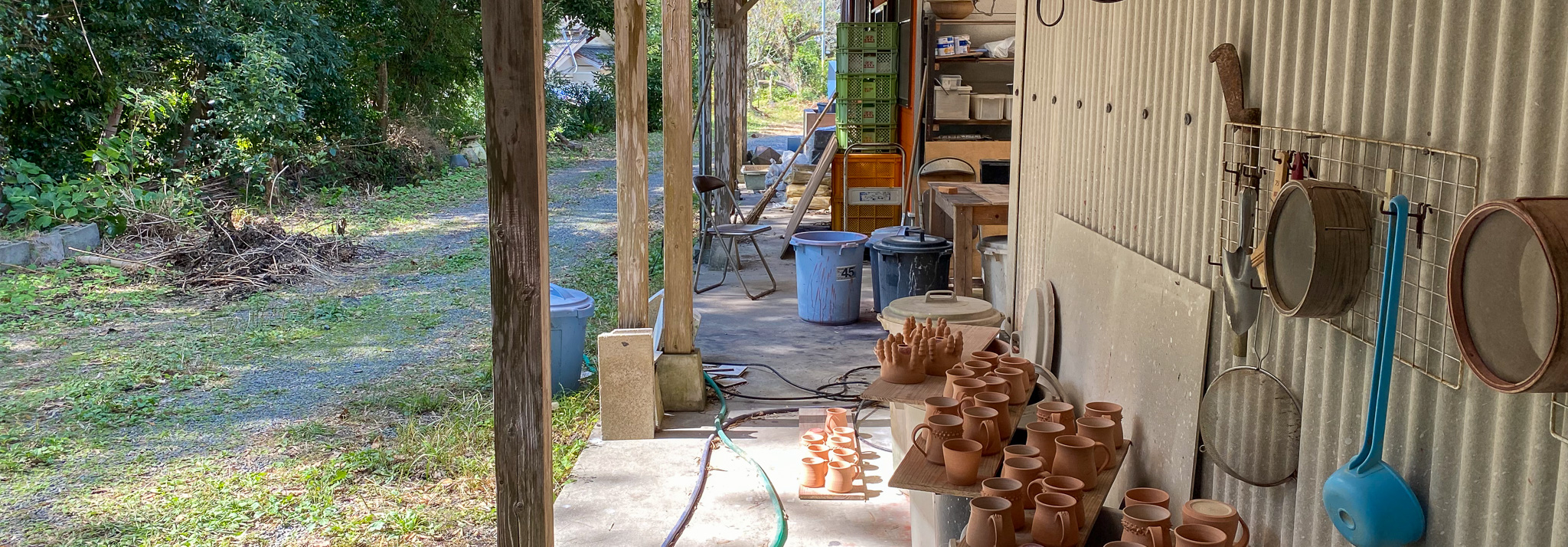
Please tell us about Keisukegama pottery.
First, the clay is made in a vacuum kneader, and then it is kneaded and shaped over a long period of time. This is important!
When I use more than 300 grams of clay, I grind it into one piece at a time, as it's more efficient.
By the way, he carefully notes the weight and size of the clay he uses for each piece. Surprising, isn't it?
(Note: He carefully and meticulously took notes on not only the weight but also the dimensions of each piece.)
The body of the flowerpot is shaped on an electric potter's wheel, then dried. At roughly the same time, the legs and handles are shaped and dried while repeatedly killing the soil. Depending on the time, sometimes I'm just making all kinds of octopus legs (laughs). From experience, I separate areas in the studio where things dry from areas where they don't.
I check the drying condition frequently, and when the body and legs have reached the same perfect hardness, I first carve the body. The legs are just raw legs, as they are after the soil has been killed (lol). Then I attach the legs and handles. This is a very important step and requires experience. When attaching the legs, I try to make the three points that come into contact with the ground as level as possible. However, all pottery here is a little warped, so I hope you enjoy that.
When attaching the legs and handles, if you don't have experience, there are many cases where they get burned off. In the past, about 30% of the pieces were ruined, but now it's less than 1%. If the kneading is not done properly, they will come off.
The "thorns" are placed in a container like those used for decorated cakes and then attached to the vessel with a 'squirt, squirt, squirt, squirt' motion. Before bisque firing, after carving, the piece is placed on the potter's wheel to expose the core, and marks are drawn with a brush all over the vessel, measuring with a ruler. This ensures that the thorns are evenly distributed. Works with thorns require careful handling, so they are divided into those for beginners, intermediate and advanced users (laughs). It takes about 40 to 50 minutes to attach the thorns for advanced users.
After bisque firing, a water repellent is applied and then glaze is lightly applied.
There are recipes for unique blends of glazes, including yellow, blue, black, red, and green.
Finally, the piece is fired in a gas kiln at about 1250℃.
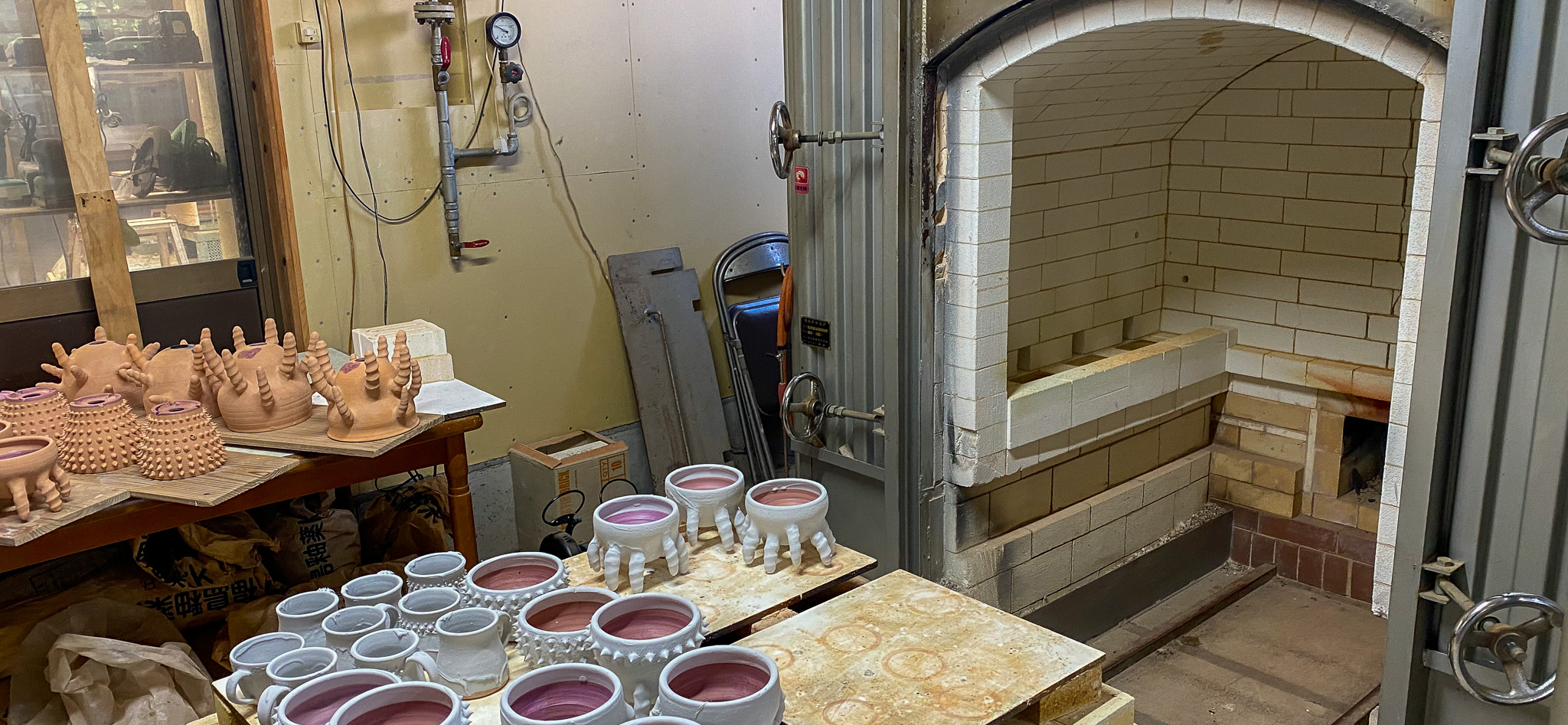
Tell us your thoughts about flower pots
I only have four or five days off a year. There's nothing else to do. Nothing at all.
I make pottery all year round. Now I make a lot of flowerpots. I'm really grateful that there is a genre called flowerpots... When I had no money, I had debts from setting up an atelier and gallery, and debts from gambling, and it was so painful I thought I was going to die... I was able to pay off my debts, and I'm grateful to the flowerpots. I'm very grateful for the flowerpots. Thank you everyone for buying them!
The best part of my job is when people post their flowerpots on Instagram. Everyone, please post them on Instagram! Drunkards love this!
I smoke Garam cigarettes. There's no better cigarette than this! I also like vintage Zippos.
He likes beer (he opened about three tall cans during the interview lol). Actually, he likes anything. Let's go for a drink next time.
But other than that, I eat organic food!!! I have to be careful about that (laughs).
Lastly, I'm human garbage, a professional drunk, and a professional potter (lol).
(Check out my Instagram lol)
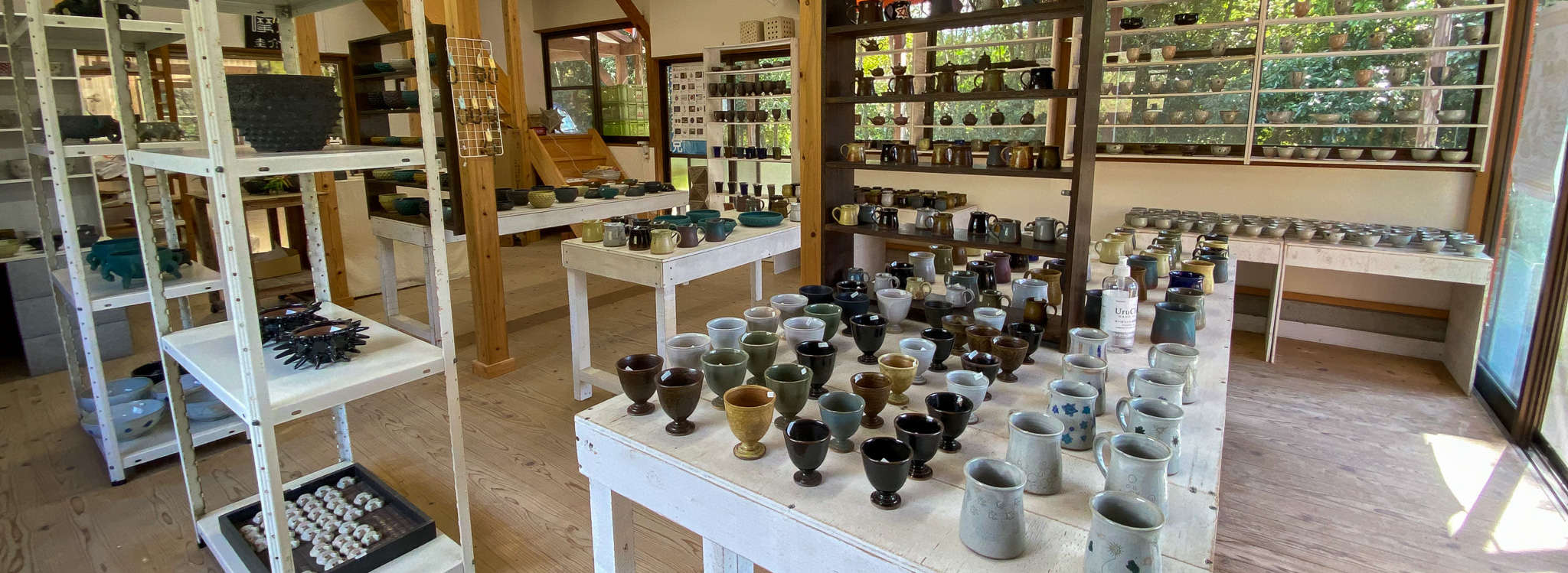
OMBLE: Thank you very much for reading to the end.
I would like to thank Keisuke-san for his assistance with his red hair, smoking garum, drinking from a long can, and even using a gas burner to demonstrate his work. I have written this in a very evasive manner. He was exactly the kind of potter I had imagined when I saw his work. I apologize for laughing throughout the interview.
On the other hand, he packed the items more carefully than anyone I've seen, and measured the size of the pieces more carefully than anyone else, so I thought he was a true professional potter. The contrast is amazing...
I'll come again! Until then, let's take care of each other!
